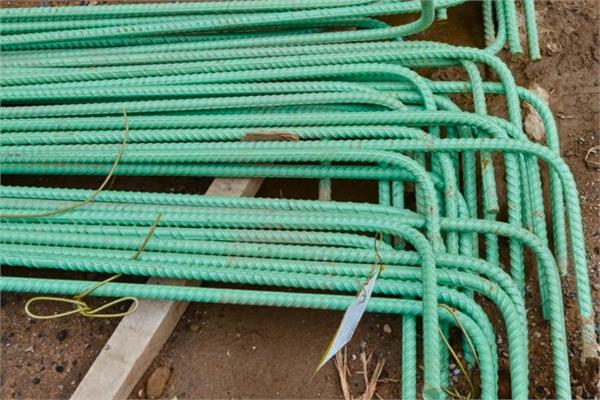
Cortec's migrating corrosion inhibitors (MCI®) offer superior protection and cost-efficiency compared to epoxy coatings for rebar.
Addressing the Limitations of Epoxy-Coated Rebar in Concrete
Concrete, the most widely used construction material globally, is renowned for its durability. However, its primary vulnerability is corrosion, which can affect both aged structures and new concrete exposed to hot, humid marine climates or regions that heavily use de-icing salts. To mitigate this, epoxy-coated rebar is often employed for added protection. Yet, engineers and contractors must recognise that this solution has limitations and explore alternative methods to address the deficiencies of epoxy-coated rebars.
"Epoxy coatings, when intact, provide excellent protection by forming a robust barrier against corrosive agents. Unfortunately, damage to these coatings is common. During transportation, bending, welding, and installation, the coatings can be compromised. Damaged areas become small anodes coupled with large coated cathodic areas, leading to pitting failures. This challenge necessitates finding backup technologies to inhibit corrosion at these vulnerable points," has stated by Cortec® CEO Boris Miksic.
A Molecular Protective Layer
Migrating corrosion inhibitors (MCI®) from Cortec present a versatile and cost-effective alternative. Applied either as an admixture or a surface treatment, MCI® permeates concrete pores, forming a protective molecular layer on metal reinforcement surfaces through ionic attraction. This layer protects both uncoated reinforcement and damaged areas where the metal is exposed by molecularly filling them. Classified as a mixed inhibitor, MCI® acts on both anodic and cathodic portions of the corrosion cell, potentially doubling or tripling the corrosion initiation time and significantly reducing the corrosion rate once initiated.
Comparing MCI® and Epoxy-Coated Rebar
MCI® additives, such as MCI®-2005 and MCI®-2005 NS, are user-friendly and can be added to ready-mix concrete during construction. Designers can use service life prediction models to estimate the amount of MCI® needed to extend service life in various environments, comparing it to the expected performance of epoxy-coated reinforcement. Additionally, while MCI® can entirely replace epoxy-coated reinforcement, it can also provide supplementary protection when used alongside epoxy coatings, particularly in areas where the coating is damaged.
Costs and Benefits of MCI®
MCI®-2020, which contains the highest concentration of MCI® among all SACIs on the market, can be applied to existing structures through spraying or spreading. It penetrates the concrete matrix via capillary absorption and vapor diffusion, migrating several centimeters into the concrete to protect embedded reinforcement. MCI® extends the service life of structures at a significantly lower fraction of the total construction cost compared to epoxy coatings, making it a viable and economical alternative.
In summary, while epoxy-coated rebar offers some protection against corrosion, its susceptibility to damage necessitates exploring supplementary or alternative methods like MCI®. By integrating MCI® into concrete structures, engineers and contractors can significantly enhance the durability and longevity of their projects.